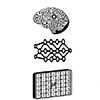| Apr 29, 2025 |
Researchers demonstrate that even small, noisy quantum circuits can outperform certain types of classical computation, without relying on assumptions or ideal conditions.
(Nanowerk News) INL researcher Michael de Oliveira, together with collaborators from the University of Cambridge and the Hon Hai (Foxconn) Quantum Computing Research Center, has published a new article in Nature Communications (“Unconditional advantage of noisy qudit quantum circuits over biased threshold circuits in constant depth”) demonstrating that even small, noisy quantum circuits can outperform certain types of classical computation, without relying on assumptions or ideal conditions.
|
|
This study focuses on constant-depth quantum circuits, meaning that all operations happen in parallel in a very short time – like multiple people completing a task simultaneously rather than one after another.
|
|
The researchers show that these simple quantum circuits can solve specific problems that no classical circuit of the same kind and size can solve, even when those classical circuits are modelled after neural networks, with tuneable flexibility.
|
|
The classical models studied here (biased threshold circuits) are used in theoretical models of machine learning and resemble basic neural networks. Despite the authors considering versions with low bias – and therefore greater versatility – they are still outperformed by shallow quantum circuits, even when the quantum devices are noisy or imperfect.
|
|
What makes this breakthrough particularly important is that it applies to qudits (quantum systems that go beyond binary bits or qubits), and the results are valid across all prime dimensions. This means the research findings described in this paper are relevant to many existing quantum platforms.
|
|
By connecting ideas from quantum computing, non-local games, and neural network theory, this research deepens our understanding of the fundamental power of quantum systems, and shows that even imperfect quantum devices can solve problems beyond the reach of classical models.
|

